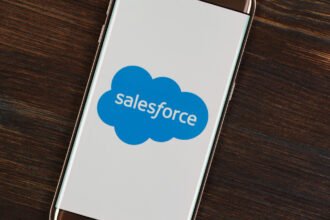If you ask someone who has been in the situation before, there?s no more helpless feeling than being wrongfully convicted of a crime you didn?t do. Unfortunately, it happens every single day in this country. But data from smartphones and social networking sites is helping some of these people prove their innocence.
Wrongful Convictions in the U.S.
Over the past two decades, more than 360 Americans have been exonerated of crimes that occurred before the DNA era of criminal investigations. They served an average of 14 years. Twenty of these individuals served time on death row. And while these are shocking statistics in their own right, the reality is that there may be five- or ten-times this many people who are currently incarcerated for crimes that they did not commit. According to a federally funded study conducted on behalf of the U.S. Department of Justice, it?s believed that wrongful convictions in cases with a sexual assault component occur at a rate of 11.6 percent. In other words, more than one out of every ten people convicted of a sexual crime ? one of the most serious categories in the entire American judicial system ? is innocent. Talk about a gut-wrenching and revolting reality. While DNA has helped exonerate hundreds of people, it?s not always the only factor involved in a case. Whether it?s a case with or without DNA, the wrongfully accused often find themselves behind bars because of an inability to provide a documented alibi. But an increased emphasis on technology and data is giving thousands of wrongfully accused individuals evidence to fall back on.
Social Media, Smartphones, and Alibis
It can be overwhelmingly difficult to prove innocence in a circumstantial case where it?s one person?s word against another?s. But today?s leading defense attorneys are using advanced criminal defense tactics to keep their clients from being wrongfully convicted. This includes the use of social media and smartphones. Recently, a man who spent more than three years in prison on a rape conviction was freed after a family member discovered deleted Facebook messages that proved his innocence. Danny Kay, 26, had been jailed after a woman accused him of rape following a sexual encounter. His conviction was largely rooted in a string of Facebook messages that appeared to show him apologizing for sex and lying about his age. However, it turned out that the accuser had actually selectively deleted messages in order to prove her version of the story. When Kay?s sister-in-law did some digging around, she was able to find the original message thread in an archived format. It showed that the sexual encounters were quite consensual. Smartphones are also valuable ? namely for their ability to track locations. In one case, a defendant was accused of robbing a store and harming the storekeeper. While he claimed to be elsewhere during the crime, there was no objective evidence to corroborate his alibi. In this case ? as in many others ? investigators were able to use cell tower triangulation to prove the defendant?s innocence. Using pictures, videos, locational data, and other information, it was proven that the individual wasn?t near the location of the crime at the time it occurred. For better or worse, we?re all creating a trail of data that follows us through our daily routines and actions. From social media messages and phone calls to locational data and time-stamped photos, it?s becoming harder for prosecutors to put wrongfully accused defendants behind bars. The hope is that we?ll soon live in a society where wrongfully accused people are quickly acquitted so that the focus can be placed on the individuals who actually commit the crimes. We still have a long way to go, but there?s light at the end of the tunnel. It?s up to law enforcement and prosecutors to use it appropriately.
Using Technology for Good
Technology gets a bad rap. Whether it?s distracted driving, cyberbullying, or some other form of illegal activity, the conversation surrounding technology and the law is often laced with negative connotations. But it?s not all bad. As social media and smartphones continue to produce valuable data for defendants, attorneys, and criminal investigators, the hope is that we?ll have fewer wrongful convictions and a better sense of justice.








